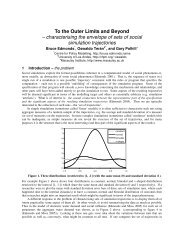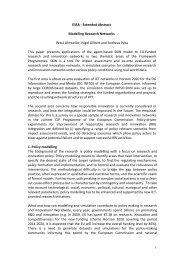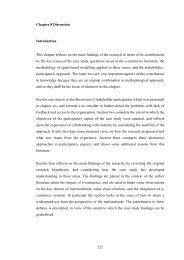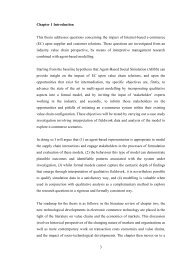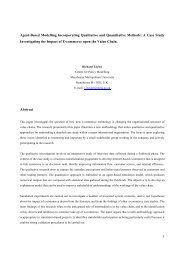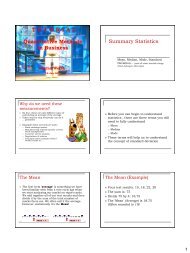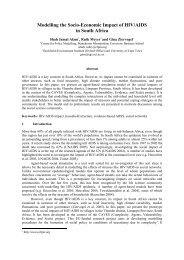7 Chapter 2 Literature Review: Markets, Intermediation and E ...
7 Chapter 2 Literature Review: Markets, Intermediation and E ...
7 Chapter 2 Literature Review: Markets, Intermediation and E ...
You also want an ePaper? Increase the reach of your titles
YUMPU automatically turns print PDFs into web optimized ePapers that Google loves.
“Large organisations initiating these systems with their trading partners will continue<br />
to find it necessary to consider subsidizing both the initial adoption <strong>and</strong> subsequent<br />
internal usage of these systems.” (Riggins <strong>and</strong> Mukhopadhyay 1999, pg. 1)<br />
The difference of result between these quantitative studies underlines the fact that<br />
there are many different aspects to be considered when researchers try to address the<br />
question of why technologies do or do not succeed. It may also explain why there are<br />
so many theoretical approaches <strong>and</strong> analytical models of diffusion processes. Issues of<br />
communication technology diffusion are complex <strong>and</strong> ideally require triangulation of<br />
research methods to obtain the best results.<br />
The next section focuses upon the developing technology of electronic commerce,<br />
highlights some of the issues relating to its diffusion, <strong>and</strong> identifies some of the<br />
business models that are prevalent in these early stages.<br />
2.4 Electronic Commerce<br />
We shall use the definition of electronic commerce supplied by Turban, Lee et al.:<br />
“Electronic commerce is an emerging concept that describes the process of buying<br />
<strong>and</strong> selling or exchanging of products, services <strong>and</strong> information via computer<br />
networks including the Internet.” (Turban, Lee et al. 1999, pg. 4)<br />
As hinted above, electronic commerce can also be classified according to the distinct<br />
type of networks <strong>and</strong> technology upon which it is based, <strong>and</strong> it is worthwhile restating<br />
them at this point. EDI is the longer established form of electronic commerce, having<br />
been around for in excess of fifteen years. It allows businesses to communicate<br />
electronically through predefined message formats. The main problem has been the<br />
reluctance of small partners to participate <strong>and</strong> therefore EDI has not been successful<br />
in all market sectors. Internet-based electronic commerce on the other h<strong>and</strong> has<br />
existed for less than half as long: at the time of press approximately seven years (the<br />
start date of rapid uptake is variously reported as occuring between 1996 <strong>and</strong> 1998).<br />
23




